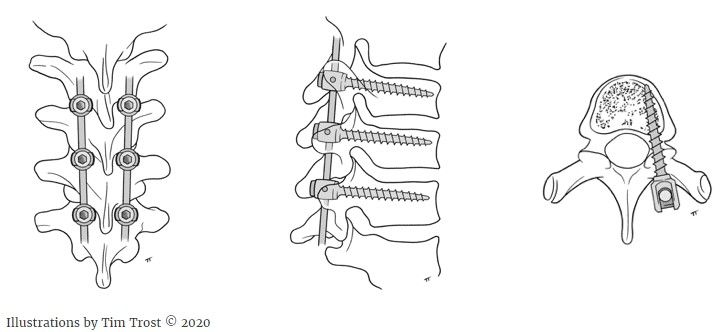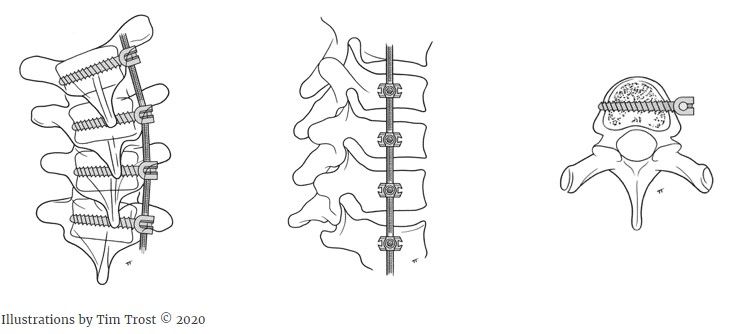When should surgery for scoliosis be considered?
You will only need to consider scoliosis surgery if the curvature of your spine is 45 degrees or more. Scoliosis affects about four out of every 100 people between the ages of 10 and 18. To put this in context: if you take a sample of a thousand people, 40 will have some scoliosis, ranging from mild to severe. Of these 40 people, 12 may need to use a brace, and 4 may benefit from surgery.
What are the surgical procedures for scoliosis?
For those who may benefit from surgery, the options include spinal fusion, magnetic growing rods, and vertebral body tethering. When spinal curves progress to a more significant degree, surgery may be the best option.
Spinal Fusion
Spine fusion involves joining two or more individual bones to make one unit.
Posterior Fusions
These are the most common scoliosis surgeries. Spine surgeons correct most curves by going through a patient’s back. They then attach screws or anchors to the individual bones of the curve, connect the anchors with smooth rods, and then move the spine into a more straight position.
Anterior Fusions
Spine surgeons can stop some curves from progressing by fusing the front of the spine. A spine surgeon works with a general surgeon to open the chest or abdomen through the side. The surgeon may insert screws and a smooth rod to hold the spine in place while fusion occurs.

Magnetically controlled growing rods can be surgically inserted on the spine. These rods have the ability to be lengthened a small amount during a routine clinic visit through the utilization of an external remote control every three to six months. The goal with magnetically controlled growing rods is to allow a child’s spine to continue growing while minimizing the need for multiple repeat surgeries and preventing rapid progression of the curve. For patients with early onset scoliosis with larger spine curves, magnetically controlled growing rods may be needed to help control the curve while the child continues to grow.
Recent advances in the treatment of adolescent idiopathic scoliosis (AIS) include strategies that harness the body’s growth to correct the spine deformity without the need for spinal fusion. In this surgery, a spine and a general surgeon work together to go through the chest or abdomen, placing screws in the vertebral bodies on the convexity (outside) part of the curve and connecting the screws with a strong rope (tether). The tether is tensioned to slow down growth on the curve convexity while allowing for continued growth on the concave (inside) part of the curve. As such, the body’s natural growth allows for curve correction with time. Because the success of the procedure relies on spine growth after the procedure, patients need to meet very specific criteria to be a candidate for this surgery.

Magnetically controlled growing rods can be surgically inserted on the spine. These rods have the ability to be lengthened a small amount during a routine clinic visit through the utilization of an external remote control every three to six months. The goal with magnetically controlled growing rods is to allow a child’s spine to continue growing while minimizing the need for multiple repeat surgeries and preventing rapid progression of the curve.
What should I expect with scoliosis surgery?
Watch this video to learn more about what to expect from scoliosis surgery.
 Home Page
Home Page
